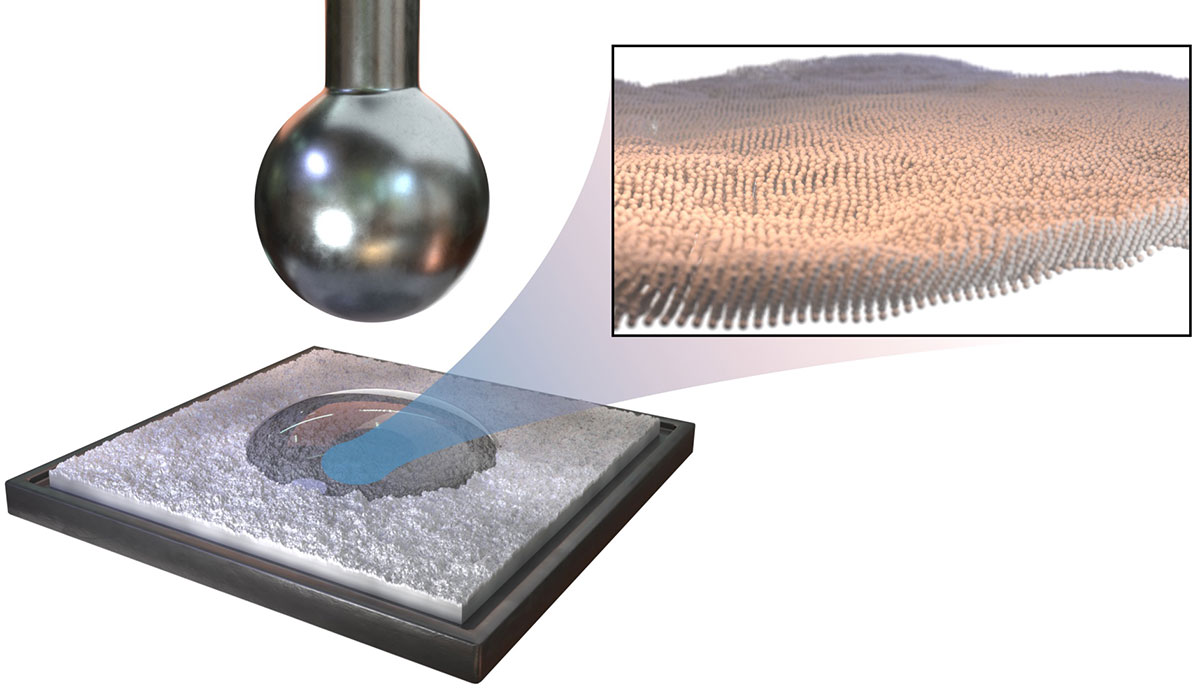News
Expanse Supercomputer Helps Researchers Understand what Causes Friction between Smooth Surfaces
Published March 28, 2023
Kimberly Mann Bruch
Although Leonardo Da Vinci achieved fame by painting “The Mona Lisa,” perhaps one of his most significant contributions to society was his work between 1498 and 1500 on a ball bearing. Da Vinci was aiming to build a helicopter (which never flew) when he created what some posit as the first ball bearing to decrease the friction of a rotating axis. Flashing forward a few centuries, researchers have made progress but still have more to learn about how and why friction exists between seemingly smooth surfaces.
To illustrate this long-studied fundamental question, a team of engineering scholars from Johns Hopkins University used the Expanse supercomputer at the San Diego Supercomputer Center at UC San Diego to create simulations to model the friction between two rough surfaces coated with fatty acids. The simulations from Expanse revealed that the junctions between the “mountains” of the original rough surfaces controlled what is termed “frictional aging” – the increase of friction when two surfaces in contact are at rest.
“We used molecular simulations on Expanse to see what happens at the nanoscale when you put two solids in contact for some time and then start sliding,” said Lucas Frerot, a postdoctoral scholar at Johns Hopkins. “Our work was a follow-up to an experiment conducted at École Centrale de Lyon by scientists who were looking at the friction response of rough surfaces coated with fatty acids.”
Frerot said that the French team, although they had a hypothesis on the molecular mechanisms, had been unable to use experiments to determine what caused the friction to increase with the amount of time the two surfaces spent at rest – a phenomenon called frictional aging – but with the help of Expanse, models were created to get to the bottom of this dilemma.

The combined effect of fatty acid molecules and nanoscale roughness explain frictional aging, as was highlighted by cutting-edge research combining friction experiments, molecular simulations and a theoretical model. Credit: Lucas Frerot
“When we simulated this situation at the nanoscale level, we were very surprised that the original nanoscale roughness of the surface made a difference – not just the fatty acids,” Frerot said. “Think of a frying pan – it is a seemingly smooth surface because it has a coating to make it this way, but at the nanoscale level, this pan is rough as it is not possible to make the surface completely smooth.”
The Johns Hopkins team started their work using the Maryland Advanced Research Computing Center (MARCC), but they needed a more powerful system for their models and began using Expanse.
“I could very easily set up my simulations and change parameters on Expanse and see what happens in a reasonable time – this would not have been possible on our local machine,” Frerot said.
To read more about this study, American Chemical Society Nano has published the work in the article entitled From Molecular to Multiasperity Contacts: How Roughness Bridges the Friction Scale Gap.
Paper authors were Lucas Frérot, Alexia Crespo, Jaafar A. El-Awady, Mark O. Robbins, Juliette Cayer-Barrioz and Denis Mazuyer. The work on Expanse was funded by the National Science Foundation Extreme Science and Engineering Discovery Environment (XSEDE) allocation number TG-MAT210003.

